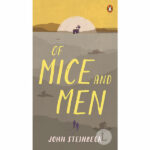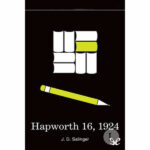Vanity Fair, a satirical novel by William Makepeace Thackeray, is an incisive and witty exploration of human folly and ambition set against the backdrop of 19th-century British society. The novel, originally published in serialized form between 1847 and 1848, follows the lives of two women, Amelia Sedley and Rebecca Sharp, as they navigate the complexities of social status, love, and betrayal in a world marked by vanity and greed. Thackeray’s novel is notable for its richly drawn characters, vivid portrayal of the period, and biting social commentary, making it a classic work of Victorian literature.
BOOK INFO
version: CLASSIC, EBOOK, AUDIOBOOK
number of pages: 850
literary movement: VICTORIAN
literary genre: LITERARY FICTION, SATIRE
1st edition: 1848
years of writing: 1846 - 1848
SUMMARY
The story begins with the introduction of Amelia Sedley and Rebecca Sharp, two young women of contrasting backgrounds and personalities. Amelia, the kind-hearted and naïve daughter of a wealthy merchant, is devoted to her family and friends, while Rebecca, an ambitious and manipulative orphan, is determined to use her wit and charm to rise above her impoverished circumstances. As the novel unfolds, the two women’s lives intersect and diverge, with their differing fortunes and decisions providing a vehicle for Thackeray’s commentary on the hypocrisy and superficiality of the society they inhabit.
Throughout the novel, Thackeray paints a vivid and often unflattering portrait of the British upper class, exposing their vanity, materialism, and moral bankruptcy. Characters such as Sir Pitt Crawley, the scheming and unscrupulous aristocrat, and Jos Sedley, Amelia’s vain and cowardly brother, serve as vehicles for the author’s biting satire, highlighting the foibles and vices that define the world of Vanity Fair.
Despite its satirical tone, Vanity Fair also delves into the emotional and psychological complexities of its characters, providing a nuanced and empathetic portrayal of their struggles and desires. Amelia’s unwavering devotion to her ne’er-do-well husband, George Osborne, and Rebecca’s ruthless pursuit of wealth and status at any cost reveal the depth of human emotion and the lengths to which individuals will go in search of love, happiness, and social acceptance.
MAIN CHARACTERS
Becky Sharp
A cunning, ambitious, and charming woman, Becky is the novel’s protagonist. Born into a lower-class family, she uses her intelligence and charm to climb the social ladder. Becky is manipulative, unscrupulous, and always looking for ways to advance her own interests.
Amelia Sedley
The kind-hearted and naive counterpart to Becky, Amelia is from an upper-class family. She is gentle, loyal, and often taken advantage of by others, including Becky. Amelia’s story explores the challenges faced by a woman who is unwilling to compromise her morals in a society that often rewards deceit and manipulation.
Rawdon Crawley
A handsome, charming soldier and gambler, Rawdon is Becky’s husband. He is often oblivious to his wife’s scheming and is infatuated with her. Despite his faults, he shows moments of genuine affection and love for his son.
George Osborne
Amelia’s childhood sweetheart and eventual husband, George is a vain, selfish, and shallow man. He marries Amelia more out of obligation than love and is unfaithful to her.
William Dobbin
A loyal, kind, and honorable soldier, Dobbin is secretly in love with Amelia throughout the novel. He often serves as her protector and tries to steer her away from the influence of Becky.
Sir Pitt Crawley
Rawdon’s wealthy and boorish uncle, Sir Pitt is Becky’s employer at the beginning of the novel. Becky uses her charm to ingratiate herself with him and his family, setting the stage for her social ascent.
Miss Matilda Crawley
Sir Pitt’s wealthy and eccentric spinster sister, she takes a liking to Becky and helps her secure a marriage with Rawdon.
Joseph Jos Sedley
Amelia’s older brother, Jos is a vain, pompous, and self-important man. He is infatuated with Becky, and she manipulates him for her own gain.
John Osborne
George’s father and a wealthy merchant, John is a strict, unforgiving man who disowns his son for marrying Amelia.
Maria Osborne
George’s sister, she is initially engaged to Dobbin but later marries another man after Dobbin’s love for Amelia is revealed.
All is vanity, nothing is fair.
WILLIAM MAKEPEACE THACKERAY
TOP 10 POINTS
- Written by William Makepeace Thackeray, Vanity Fair was first published as a 19-part serial between January 1847 and July 1848 before being released as a single volume.
- The subtitle of the novel is A Novel Without a Hero, which emphasizes the absence of any truly virtuous or admirable characters and highlights the satirical nature of the work.
- The novel is set during the early 19th century, against the backdrop of the Napoleonic Wars, offering insights into British society and the impact of the conflict.
- The story follows the lives of two women: Becky Sharp, an ambitious and cunning social climber, and Amelia Sedley, a kind and naive upper-class woman.
- Thackeray uses the novel to satirize various aspects of British society, including social class, morality, and the pursuit of wealth and status.
- The title, Vanity Fair, is a reference to a fair in John Bunyan’s The Pilgrim’s Progress, representing the worldly and materialistic aspects of life.
- Thackeray employs a variety of narrative techniques in the novel, including authorial intervention, where he directly addresses the reader, offering commentary on the characters and events.
- Vanity Fair has been adapted into multiple films, television series, and plays, with the most recent adaptation being a 2018 British television miniseries.
- The novel has had a lasting influence on literature and popular culture, with Vanity Fair becoming a widely recognized metaphor for a superficial and materialistic society.
- Vanity Fair is considered a classic of English literature and is known for its vivid characterization, biting satire, and engaging portrayal of the complexities of human nature.
In conclusion, Vanity Fair is a masterful work of Victorian literature that skillfully blends satire, social commentary, and character-driven narrative to create a vivid and engaging portrait of 19th-century British society. The novel’s richly drawn characters, incisive wit, and unflinching exploration of human folly and ambition make it a timeless and thought-provoking examination of the human condition. Thackeray’s masterpiece continues to resonate with readers today, offering a captivating and thought-provoking journey through the world of vanity, greed, and love.
MOVIE AND TELEVISION ADAPTATION
Vanity Fair has inspired various movie and television adaptations that bring the classic novel’s characters, plot, and themes to life. Here are some notable adaptations:
- 1998 BBC Miniseries: This six-episode television adaptation stars Natasha Little as Becky Sharp and Frances Grey as Amelia Sedley. The miniseries is known for its faithful representation of the novel and its focus on character development. The series received positive reviews for its performances and storytelling.
- 2004 Film: Directed by Mira Nair, this film adaptation stars Reese Witherspoon as the ambitious and cunning Becky Sharp. The movie explores the intricate world of 19th-century British high society and its hypocrisy. The film also stars Jonathan Rhys Meyers, Romola Garai, James Purefoy, and Gabriel Byrne. The movie received mixed reviews, with some critics praising its visual style and Witherspoon’s performance, while others found it lacking in depth and nuance.
- 2018 ITV Miniseries: This seven-part British television miniseries stars Olivia Cooke as Becky Sharp, alongside Tom Bateman, Claudia Jessie, and Johnny Flynn. The series received praise for its strong performances, particularly from Cooke, as well as its lavish production design and costumes. The adaptation also modernizes some elements of the story and features a more feminist perspective on the novel’s characters and themes.
These various adaptations of Vanity Fair offer different interpretations of Thackeray’s novel while staying true to the core themes and characters. Each version brings its own distinct style and approach, providing audiences with an opportunity to explore the world of Vanity Fair through various lenses.
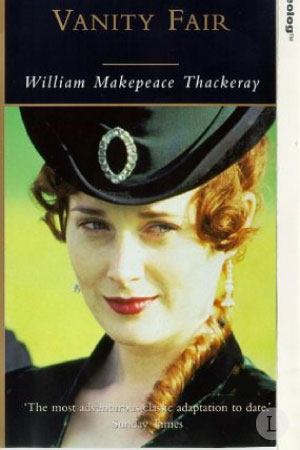
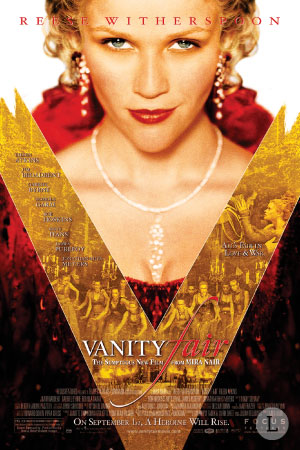
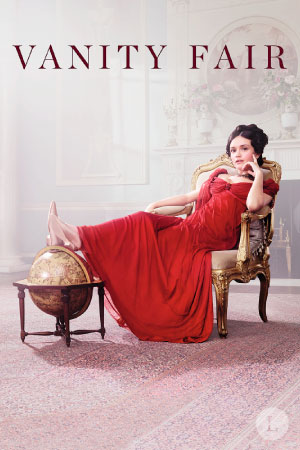
ABOUT WRITER
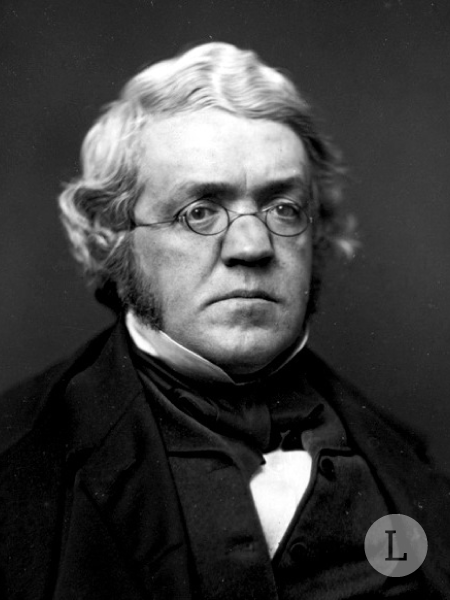
Delve into the life of William Makepeace Thackeray, one of the most significant novelists of the Victorian era, whose wit and keen observations continue to captivate readers today. Best known for his satirical masterpiece Vanity Fair, Thackeray left an indelible mark on English literature with his penetrating insights into the complexities and hypocrisies of society.


